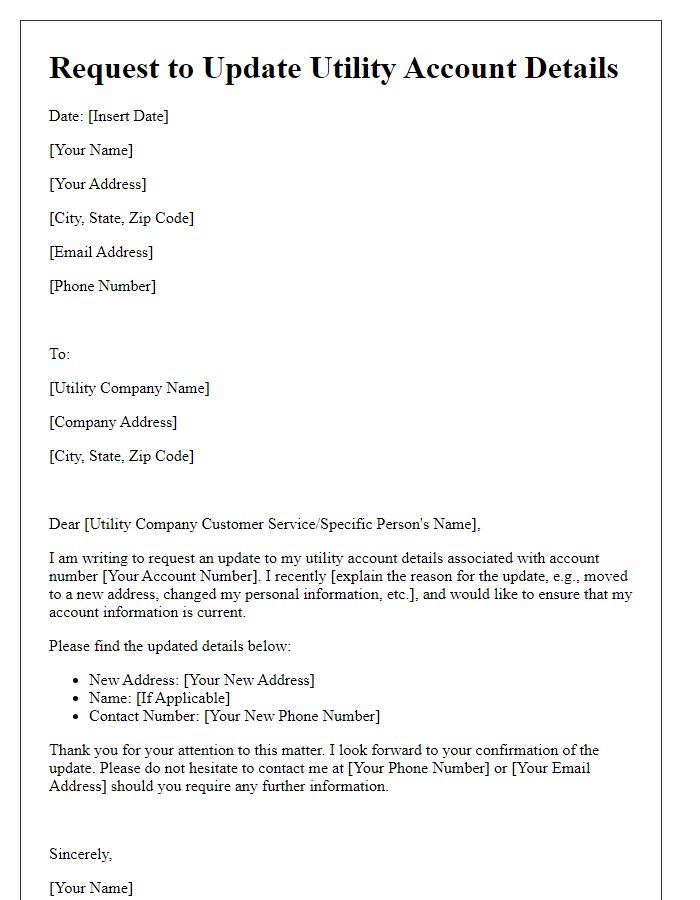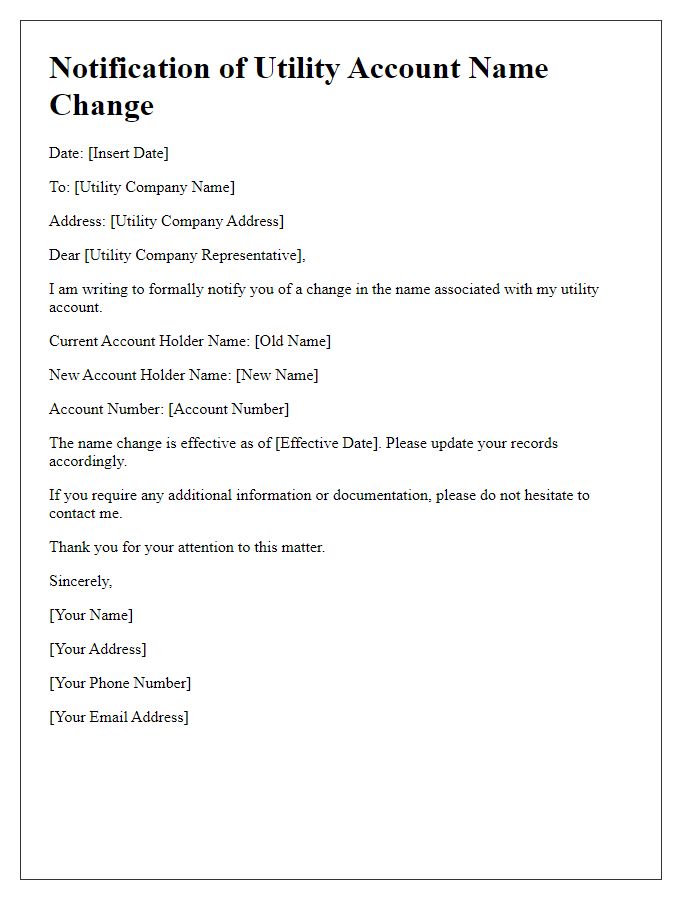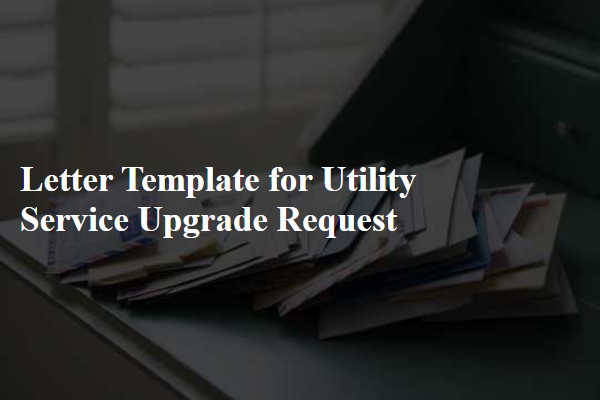Are you planning to change the name on a utility account? It's a common situation that many people face, whether due to moving, marriage, or simply needing to switch responsibilities. Updating your utility account holder information can seem daunting, but it's a straightforward process that ensures your services remain uninterrupted. Read on to discover the essential steps and tips for making this transition smooth and hassle-free!

Account holder's full name and contact information.
Utility account holder changes require precise information for a smooth transition. Full name of the account holder must be provided as registered with the utility company, typically including middle initials or suffixes (like Jr. or Sr.). Contact information should encompass primary phone numbers (including area codes), email addresses for digital communication, and mailing addresses for official correspondence. Additionally, the utility account number must be included to ensure proper identification of the account in question, along with any other pertinent details that can assist in processing the change efficiently, such as the date the account change will take effect and the reasons for the change.
Utility account number and service address.
Changing the utility account holder's name involves updating the utility service provider with relevant details. Utility account number, a unique identifier for customer accounts, must be correctly cited. Service address (the exact location for utility services) needs to be included to ensure accuracy. Verification may require additional documentation, such as identification or proof of tenancy. Utility companies typically have specific procedures outlined on their official websites for these adjustments. Ensuring timely updates can prevent service interruptions and billing discrepancies, which can occur if the information is outdated.
Effective date of account holder change.
Changing the account holder for a utility service can have significant implications for billing responsibilities and service access. The effective date (specific date on which the change takes place) for the account holder change should be clearly stated in communications with utility companies, such as water, electricity, or gas services. This ensures a seamless transition of responsibility from the current account holder to the new one. It is crucial to provide identification details (such as Social Security numbers or account numbers) for both parties involved in the change. This process may also require additional documents (like proof of residence or consent forms) to verify the new account holder's eligibility. Therefore, meticulous attention to detail in documenting the effective date and associated responsibilities is essential for avoiding any service disruptions.
New account holder's full name and contact information.
Changing the account holder for a utility service can significantly streamline billing processes under new management. The new account holder needs to provide their full name, such as Johnathan Smith, as well as comprehensive contact information, including phone number (e.g., +1 234-567-8901) and email address (e.g., john.smith@email.com). It's essential to also include the address associated with the utility account (e.g., 123 Elm Street, Springfield 62701) to ensure seamless updates in the utility provider's records. Submitting this information promptly aids in avoiding service disruption and ensures that all future correspondence is directed appropriately.
Authorization and signature of current account holder.
Changing the account holder for utility services requires accurate documentation and authorization to ensure a seamless transition. The current account holder must provide a signed authorization letter clearly indicating the intent to transfer responsibility for the utility account, typically associated with services such as electricity, water, or natural gas. This letter should include pertinent details like the account number, the full names of both the current and new account holders, and any necessary identification numbers, such as Social Security or driver's license numbers. It is essential to include a contact number to facilitate any follow-up communication. Additionally, utility companies may request a valid photo ID from both parties to verify identities before processing the change.













Comments